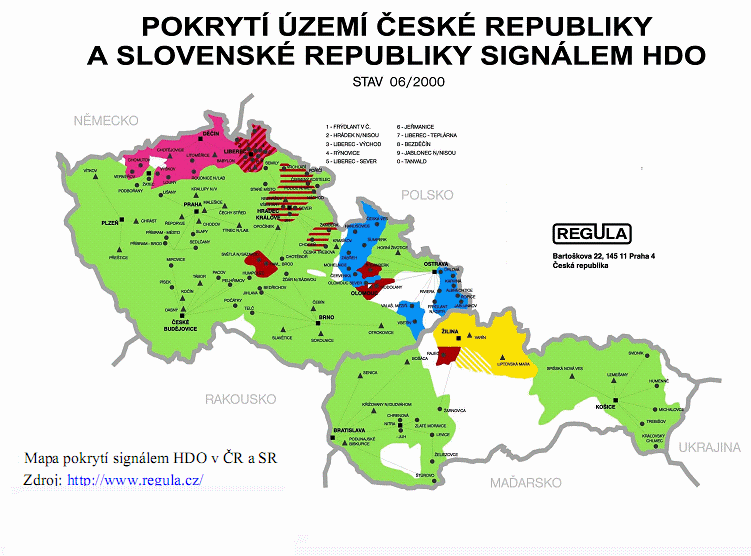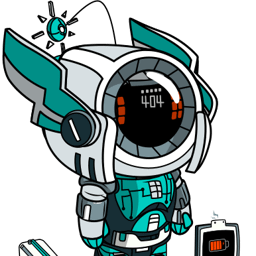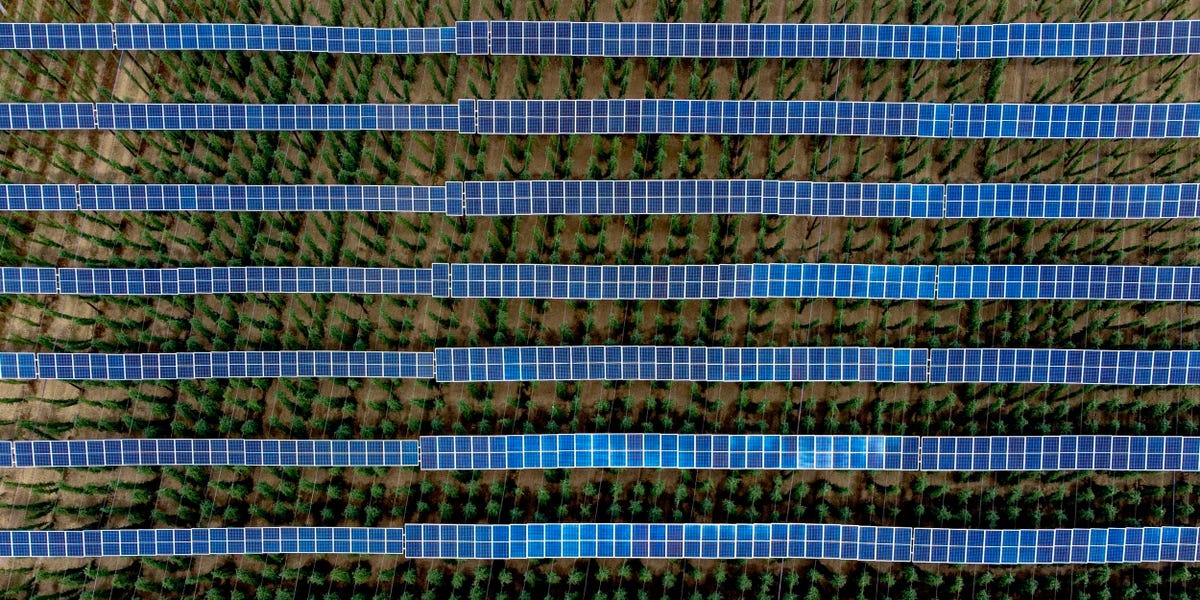Cheap energy being framed as some kind of problem is a great demonstration of why we need a free press that isn’t solely owned by billionaires
They could always just close their coal power plants. Idk why they don’t.
My guess is that in a climate like Germany’s, solar isn’t consistent enough to provide the steady baseline power that coal plants can.
One of the complexities of power infrastructure is that demand must be met instantaneously and exactly. Coal and solar typically occupy different roles in a grid’s power sources. Coal plants are slow to start, but very consistent, so they provide baseline power. Solar is virtually instantaneous, but inconsistent, so it’s better suited to handle the daily fluctuations.
So, in a place like Germany, even in abundance, solar can’t realistically replace coal until we have a good way of storing power to act as a buffer. Of course, nuclear is a fantastic replacement for coal, but we all know how Germany’s politicians feel about it…
Coulnd’t we use solar to pump water into reservoirs, and then let the water flow through hydroelectrical dams when we need the electricity?
[yes](> https://en.wikipedia.org/wiki/Pumped-storage_hydroelectricity)
Taking into account conversion losses and evaporation losses from the exposed water surface, energy recovery of 70–80% or more can be achieved. This technique is currently the most cost-effective means of storing large amounts of electrical energy, but capital costs and the necessity of appropriate geography are critical decision factors in selecting pumped-storage plant sites.
Oh wow, I had no idea this existed. Awesome!
Wait Are these not common where you are?
We also know building nuclear takes 20 years and costs more than building thrice the capacity in renewables + Germany has no long-term nuclear storage, only temporary one’s a la Simpsons.
Germany had 17 active nuclear plants in 2011 and decommissioned them all by 2023.
They were already past their expiry date. Germany would face the same shit France is facing with their old reactors.
Stop burning coal then
German power plants communicate with each other and coal power can go to 50% capacity in 15 minutes, during which the excess power can be sucked up by pumped hydro, for <1 minute long deviations there is enough battery and flywheel storage too. And most people in Germany have utility-controlled tank water heaters, which can be turned on not just at fixed hours but also based on the grid status (this causes the meters to go into Low-Tariff mode too), and sometimes even smart thermostats, enabling remote load management.
In emergency power excess, solar can go off grid safely or brakes can be applied to wind turbines, which wastes power but is preferred to overheating transformers due to higher mains frequency (yes, power overproduction causes the frequency to go up, not so much the voltage).
But maybe the coal lobby keeps convincing the distributor that operating plants below 80% doesn’t do their workers justice, or some nonsense like that
… Consumer water heaters in Germany are built in as demand shaving??? That is so damn cool.
Oh boy, you just triggered my nerd infodump mode. Brace yourself.
Disclaimer: I only researched the practical applications in the Czech Republic. I’d guess Slovakia’s situation is 99% similar, the neighboring Germany is 95% similar (just with more solar and no nuclear power) and most of Europe is 80% similar (with varying energy mixes). Similarly to Teletext, I am pretty sure Alec from Technology Connections (YouTuber from Chicago) would have made a video on this if it was widespread where he lives.
Basically yes. Residential boilers in Germany are part of load management.
Technically, the electric water heaters themselves are not “smart” in any way, they are just resistors and thermostats in a water tank. The “smartest” units you’ll find use a decades-old trick with two thermostats and heating filaments to achieve a larger virtual tank size. Turn them on, and they’ll do their best to maintain a steady 70 °C (or whatever) at the output. Similarly, gas furnaces are all rather dumb too. There are two contacts on the units; bridge them to allow at most 100 mA to flow, which will energize a contactor (big relay) to switch the heating element or signal to the furnace electronics to go through the ignition routine. Air conditioners typically have another contact for cooling.
This is great: the protocol basically every heater uses could not be simpler and that allows anyone to build a thermostat, so available products range from the most basic bimetallic units (temperature knob and manual day (T)/night (T–5°C)/off switch) to AI Smart Home Automation IoT Buzzword Salad™ devices. The most common kind nowadays has two AA cells, a thermistor, a simple LCD display, rubber buttons to temporarily adjust the temperature manually, and a flap to reveal more buttons that set the time and weekday, create the weekly temperature schedule, adjust hysteresis, start Vacation Mode etc. There is either a set of wired contacts and a latching relay for the aforementioned wired “protocol”, or a wireless transmitter that controls a wall-plug-based receiver close to the furnace.However, a ripple control system receiver can be connected in series to the thermostat, only allowing heating at certain times set in your energy contract. Or more often, people hook it up to the boiler. All energy you consume at these times is metered separately and up to 2x cheaper so the system saves you money at rare discomfort, you can use a switch to override it at any time if you accept the extra cost.
Various companies use ripple control system receivers for energy intensive, time-independent operations, such as
- water tower pumps
- baking, annealing furnaces
- computationally heavy tasks (rendering)
- heating water for swimming pools
- charging electric vehicles
All such uses have different tariffs, hours (pltheirntractual limits to unscheduled switches) and thus need different RCS channels. Also, RCS receivers can control municipal lighting etc., and at higher frequencies that don’t propagate too far, power plants would call each other but that’s obsolete, now we use that band for smart city LAN (traffic lights, various sensors, parking ticket vending machines). This is called Power Line Communication (PLC) and the railway uses it too. I’ve seen a claim that such system caused an aircraft (Invicta International Flight 405 on 1973-04-10) to crash into the Alps after misinterpreting it as a radio beacon at Basel Airport but that person did not cite sources (interference was likely involved but nobody else claimed it was from PLC).
First dual-tariff systems used switching clocks inside the tamper-proof electric meters. This did not allow for regulation so a simple device with mechanical logic (rotary decoder of series signal) was introduced, with a starting tone (3 seconds of an approx. 250 Hz “tone” on top of the mains voltage) followed by a series of 44 gaps or tones (1 second long, 0.5 s apart) that signalled on/off states for each of the 44 channels. This was later revised into a “1 of 4” + “1 of 8” coding for 32 device groups, each then having 16 channels controlled by 2 bits each, with “10” meaning ON, “01” meaning OFF, any other means ERROR; ABORT RECEPTION. This division of the 44 pulses into groups of 4+8+2x16 allowed for 512 channels and more robustness. This protocol from the 1980s is used to this day, and so is a similar one in Germany called DECABIT. The later VERSACOM, used in both countries, then uses proprietary licensed data schemes with up to 128 bits and allows addressing individual customers. It always starts with 4 “1” bits so that dumb receivers expecting their “1 of 4” code (0001, 0010, 0100 or 1000) abort reception. VERSACOM receivers have clocks synced by special transmissions and keep a regularly broadcast weekly schedule in memory so that the bandwidth is free for the old protocol commands at switching times. Every household is assigned one of the 512+ channels and these groups switch minutes apart to prevent jumps in mains load. For some reason, frequencies used to send this signal sometimes differ between or even within control regions and sometimes not, and include 🟪183⅓ Hz, 🟨191 Hz, 🟩216⅔ Hz, 🟦283⅓ Hz, 🟥760 & 1060 Hz (no, the image doesn’t exist in better quality other than cropped versions, I’ve looked everywhere).

If you want to look up info for Germany, the keyword is Rundsteuersystem; for Czech Republic and Slovakia it’s Hromadné dálkové ovládání.
But mains beeping is not where the future lies. Our ripple control device is built into the meter and uses 2G, I imagine newer IoT protocols are being used too. People in the US have started opting into dynamic-pricing contracts and using smart thermostats that download info on quarter-hour prices 1 day ahead and switch accordingly. There are various settings that trade off comfort and cost but I think significant savings can be achieved with negligible discomfort. Some Americans would say that the utility controlling their meters feels like communism but participating in the free market and chasing discounts doesn’t, even though the result is the same. EV owners charging overnight will probably soon be able to choose between options like
⚪ charge ASAP (higher battery wear, estimated cost $3.11)
⚪ charge by ➖6 am➕, constant power (lowest battery wear, estimated cost $2.81)
🔘 charge by ➖6 am➕, lowest energy cost (higher battery wear, estimated cost $2.07)Target state of charge: ➖90 %➕ (250 km, battery wear ▓▓▓░░)
☑️ Remember selection
Many Texans are installing battery backup solutions and maybe will realize they can make money off them by “renting” them to the utility company in seasons when blackouts are unlikely. Or will just save money by smart-charging them at the price dips, which has the same effect but with less “communism”.
You will be able to see the price graph in an app and decide what delay to use on a washing machine, dryer or dishwasher (provided they are far enough to not disrupt your sleep if the dip is at night). Maybe the machine will do it by itself, knowing when the most power-intensive part of the cycle is.
People with unused basements sometimes choose to install “sand batteries” that store heat (or “cold” in summer) from heat pumps, which can be retrieved at another time of day. These installations always come with dynamic power pricing.
OK, I’m going to save you time because I do some controls and totally get how “easy” demand management should be given how simple most devices are.
But WHAT?! Thats all built into the grid over there??? That’s AWESOME. Let me see if I have this right: there’s essentially a small transient frequency modulation in the 60hz(?) in the grid that allows devices to receive a “off” signal?
I could be wrong but I’m 90% sure we’ve got nothing like that in the states. MAYBE there’s something like that for communicating with the meter itself but certainly not past the meter.
I think you might have it in the US but not for residential customers.
No, frequency-modulating the 50/60 Hz is not technically feasible, that would mean speeding up/slowing down lots of synchronous motors quickly. Instead, a higher-frequency low-voltage generator is connected in series or in parallel (via a capacitor) to the secondary of a grid transformer, overlaying some 3V sine wave at 216⅔ Hz (or other frequency thereabouts) on top of the 230V 50Hz mains. This does not propagate beyond 50 km or so (and higher frequencies (red on map) even worse) so multiple transmitters are required for coverage. The country’s grid is divided into districts and each gets their own RCS signal, and signal traps (low pass or band stop fiters) are used to divide them.
Fuck that title. No such thing as too many solar panels. The only thing that is bad is how the energy is used or if it’s wasted. Free energy should mean algae production which would mean carbon negativity. Negative energy price should mean negative carbon emissions, get on it.
Free energy should mean algae production
This is a jump I’m not understanding. Do you mean that energy having no cost would mean that the electricity generated can be used to make algae? Or that it’s a byproduct of?
Do you mean that energy having no cost would mean that the electricity generated can be used to make algae?
Yes. Make algae with energy that produces no carbon dioxide = carbon sink.
There’s just no economic incentive to do so. (yet?)
The economic advantage is that our grandchildren might be able to have an economy if we don’t crash and burn this place before we die.
You are right, this is BS.
I recently researched this and Germany’s grid is quite “smart” (the oldest technologies involved, such as DECABIT or VERSACOM over PLC, very much predate the term “smart grid” but whatever) and power plants and households are connected for production and load control. Power plants are required to participate but households can use a load management system for water tank heating (the basic premise is that specific frequency impulses are sent over the power grid for primitive (originally relay-based!) logic in DECABIT meters to switch depending on the assigned device group, and meters count in lower-price mode while the load is activated for a guaranteed number of hours each day; you can manually override the switch for expensive on-demand water heating) and/or HVAC (here, a smart thermostat is usually used that gets real-time energy prices and decides based on its temperature range settings if it saves money to run heating/cooling).
People in Texas apparently hate this (muh freedom), and look how reliable their grid is!
Anyway, solar, unlike coal or nuclear, is absolutely capable of going off-grid if necessary. There is an MPPT system in their inverters that usually works to operate the panels at the optimal voltage & current so that it can suck the most power out of them but it can be overridden to work at below 100% efficiency, or even 0%. This will cause the panels to run with no current draw and get about 20% hotter but they are designed to withstand this. Similarly, wind turbines can be braked, water can be passed outside turbine shafts and so can pressurized steam if you really need to cut production quickly. Still, this is an emergency condition, it is preferred to use pumped hydro (responds in 1 minute, limited capacity) or batteries (respond in seconds, very limited capacity) or lower coal/gas-based production (responds in 3-20 minutes for as long as you wish) or load-side management to regulate the grid, as it wastes no power.
The system is very complex and robust, the frequency (the variable most dependent on production/load balance) only dips below 49.8 Hz about once per a few years (the emergency value that was reached in February 2021 in Texas and can only be sustained for minutes before total blackout is -1% from nominal (49.5 or 59.4, respectively) and has never been touched in Europe’s modern history).
(You’d think it would be voltage what falls in case of too little power but it can be readjusted quite easily with switched transformer taps and, oddly enough, reactive power management (connecting a few capacitor/inductor banks to mains) when necessary, however frequency control is the difficult part.)
Oh no, it’s too bad Germany isn’t surrounded by other countries it could sell that excess power to!
It probably wouldn’t be negative prices if they could. I’m guessing it can’t be sold easily due to distance or some other factors? Which is why it maybe has to be used. But I’m just guessing.
The whole European grid is connected (which is a miraculous feat). And yes, there is a European market for energy where countries can sell surplus and buy in high demand situations.
Always interesting https://www.energy-charts.info/charts/price_spot_market/chart.htm?l=en&c=DE
It gets even more absurd. The southern states blocked building large power lines to transport cheap wind energy south. Now they struggle because the chea renewable energy cannot go there. So while there is plenty of renewables in the north the south still runs coal plants to provide local energy. But then the people in the north have to pay for “network fees” because the South couldnt take their energy.
Because of this it was suggested to split the German energy market in two, where the south which fought against renewables would have to pay the actual electricity costs instead of leeching of the North that properly build up renewables. This was fought teeth and nails because the South of Germany is like Texas but with an even worse superiority complex.
“South Germany” Du meinst Bayern, oder ist Hessen auch dabei? xD
Hauptsächlich Bayern, aber Hessen und BaWü haben sich mWn. bei Netzausbau und Ausbau erneuerbarer Energien bisher auch nicht mit Ruhm beckleckert.
Aktuell wird doch ne Stromtrasse durch BW gebaut. Diese lächerliche Nummer von wegen, wir hätten gerne Strom, aber keine Trasse, war eine astreine CSU Nummer.







